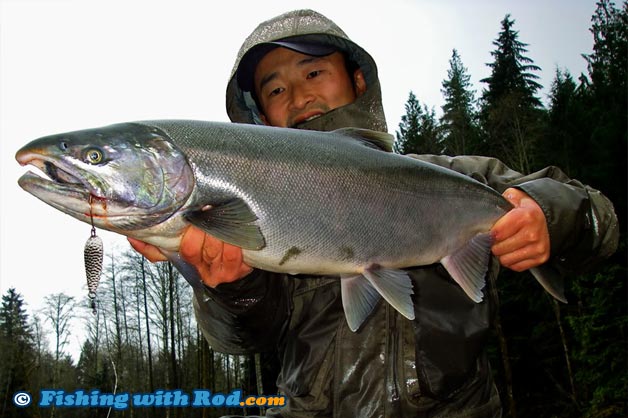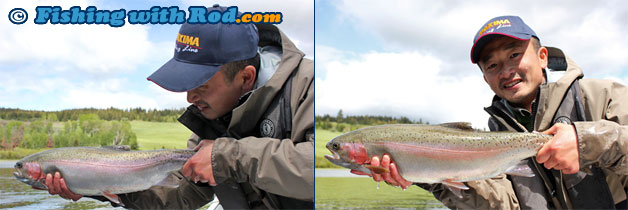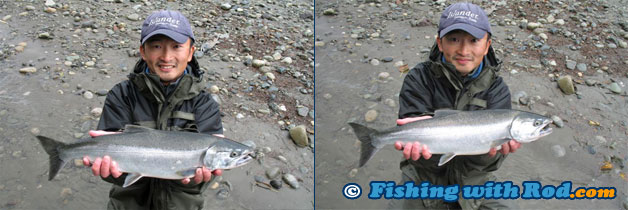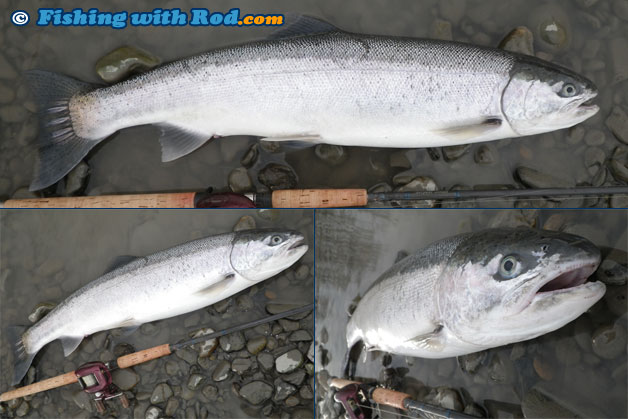The Best Angle?
By Rodney Hsu, Fishing with Rod | Published in March 2012

The camera angle brings out the best of your subject, this is no exception in fishing photography. When taking a picture of your catch, certain angles can definitely make the fish's best features more noticeable.
These best features can be the spots on its back, the shine on its scales, the distinct lateral line, the size of its eyes, the teeth, the colours along its body, the rays and spines along its fins, the shape of its tail and other unique body structures. They are what make a fish interesting and you should use your camera to make them standing out in your photographs.
When taking a photo of a fish and the angler, I always want to make sure that the fish's head is pointing slightly toward me. The eyes and jaws of a fish are two key characteristics used to identify it, so it is important to capture a crisp image of the head. If the fish's head is not pointing toward away from the camera, then it is not as noticeable.

The above photographs are a good example of the differences of these angles. Both photos are in fact the same fish. In the left photograph, the rainbow trout is pointing away from the camera, while it is not in the right photograph. The focus on the right fish is clearly on its body and head, but the focus has been lost in the left photograph as the fish's body and head are a lot smaller.
I also want to make sure that the camera is not pointing down at the fish, instead I prefer to keep the camera angle at 90 degrees to the fish's side. Sometimes taking the photo by having the camera slightly below the fish can also produce great effects.
 The above photographs of the same coho salmon are taken at slightly different angles. In the left photograph, the camera is pointing down at the fish so it does not capture a full shot of the side of this fish. In the right photograph, the fish is tilted slightly so its abdomen is shown more clearly. The difference is very little, but the photograph on the right provides a better view of the fish.
The above photographs of the same coho salmon are taken at slightly different angles. In the left photograph, the camera is pointing down at the fish so it does not capture a full shot of the side of this fish. In the right photograph, the fish is tilted slightly so its abdomen is shown more clearly. The difference is very little, but the photograph on the right provides a better view of the fish.
Because some camera angles are better than others under certain situations, you should experiment by taking shots of the same fish at different angles if possible. A fish that you decide to keep is the perfect subject for these practices.

The above three photographs of the same steelhead are taken at three different angles. All three turned out very satisfactory and can be used for different purposes. The top one is a good photograph for fish identification because you can clearly see the head, the fins, the entire side of the body, and the tail. The bottom left photograph is similar to the top photograph, except the camera is tilted slightly with a bit more focus on the head region. The bottom right photograph specifically focuses on the head region of the fish by lowering the camera to the fish's level. Which one do you prefer?
If you are taking photographs of a fish that is being released, it is important to communicate with the person who is holding the fish to capture the image from the best angle. The person holding the fish does not necessarily know how the fish will look in the picture, so your duty as a camera person is to instruct him or her to tilt the fish or hold the fish out. By looking into your view finder, you can quickly determine whether adjustments are needed. This gets the job done swiftly so the fish can be released unharmed.
Next time when you encounter that prized catch, play around with camera angles so you can discover hidden, beautiful features of your fish which you normally wouldn't notice.

